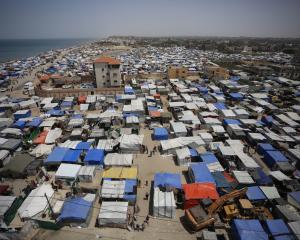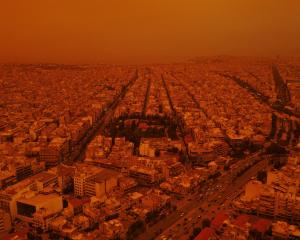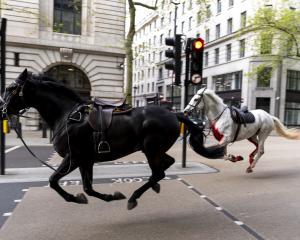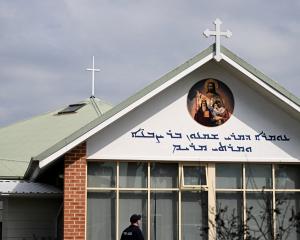Firefighters continue to battle hundreds of bushfires across Australia as blazes spring up in new locations, stepping up pressure on Prime Minister Scott Morrison to tackle climate change.
In Victoria, dozens of fires burned across the southeastern on Thursday and temperatures of 40.9 degrees Celsius in the capital Melbourne matched the hottest day on record in 1894, Australia's weather bureau said.
Authorities warned residents of towns about 50km north of the city of Ballarat that it was too late for them to evacuate safely.
"You are in danger, act now to protect yourself," fire authorities said in an alert. "It is too late to leave. The safest option is to take shelter indoors immediately."
Blazes across several states have endangered thousands of people, killing at least four people this month, burning about 1 million hectares of farmland and bush and destroying more than 400 homes.
The early arrival and severity of the fires in the southern hemisphere spring follows three years of drought that experts have linked to climate change and which have left bushland tinder-dry.
With 10 days remaining to the official start of summer, extreme temperatures and high winds have sparked wildfires in new areas, even as firefighters tracked the crisis across the mainland, the Northern Territory and the island of Tasmania.
In Victoria, power to more than 100,000 homes was knocked out amid lightning strikes and strong, gusty winds of more than 110kmh that knocked tree branches into power lines, ahead of a cool change expected to bring relief in the evening.
The extensive damage was likely to leave some customers without power through the night as utilities worked to restore networks and fix downed powerlines, a spokeswoman for power provider Ausnet said.
State authorities issued its first Code Red alert in a decade, signifying the worst possible bushfire conditions, warning that should a fire start it would be fast moving, unpredictable and probably uncontrollable.
SYDNEY STILL SMOKEY
In New South Wales thick smoke blanketed the most populous city of Sydney and for a third day on Thursday, and residents were urged to keep children indoors. While the smoke may diminish on Friday it was likely to return over the weekend, the RFS tweeted.
Air quality for parts of Sydney, the northern tablelands and the northwest and southwest slopes, was hazardous on Thursday and Frday's air quality in Sydney was expected to be poor.
Almost 60 bushfires are still burning across NSW with widespread very high fire danger set to continue across the state.
While there are no total fire bans in place for Friday the NSW RFS tweeted a warning that warm weather is set to continue.
The RFS announced on Thursday that 612 homes had so far been lost in the state's devastating bushfires.
Five hundred and three of those homes were destroyed in the past fortnight alone. The fires have also claimed six lives.
NSW has imposed tough new water curbs in Sydney from December 10, when a key dam is expected to be down to 45% capacity. Residents face fines if they use hoses to water their gardens and wash their cars.
CLIMATE POLITICS
The unrelenting conditions have sharpened attention on the climate change policies of Prime Minister Scott Morrison, who rejected any link.
"Climate change is a global phenomenon, and we're doing our bit as part of the response to climate change," Morrison told ABC radio.
"To suggest that, with just 1.3% of global emissions, that Australia doing something differently - more or less - would have changed the fire outcome this season, I don't think that stands up to any credible scientific evidence at all."
Morrison's conservative government has committed to the Paris Agreement for a cut in emissions from 26% to 28% by 2030, versus 2005 levels. Critics say current projections suggest it will miss that target and have urged remedial steps.
- Reuters and AAP












